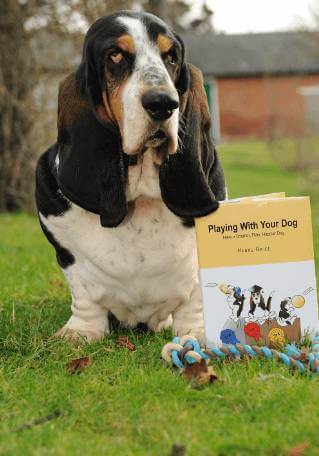According to a new survey conducted by 4lite, a smart lighting brand, over 80% of pandemic-pup owners are worried about leaving their dogs home alone.
With many owners returning to work in the office, those dogs purchased during the last two years may experience longer periods alone and this is a concern for owners. That’s because for around three quarters of those surveyed, they said their dog exhibits negative behaviours when they are left alone.
The research, discovered that nearly half of dog owners (44%) bought a new dog during the pandemic with a quarter (26%) becoming dog owners for the first time. However, those who took advantage of the pandemic to welcome their first dog are struggling more to adapt to leaving their pups home alone.
Top negative behaviours by first-time dog owners:
Behaviours reported by the owners surveyed included
- Whining 50%
- Watching for owners return all day 39%
- Appearing sad 24%
- Barking or howling 25%
- Pacing around the home 17%
- Destroying items at home 14%
- Urinating 11%
- Finding it hard to settle 9%
- Trying to escape 6%
- Excess saliva 6%
- Vomiting 5%
- Self-mutilation 3%
In terms of methods owners adopt to try to help their dog when alone, 40% leave the TV or radio on and 14% put the heating on to make them more comfortable. Just under one in five (17%) report using a smart device to monitor or talk to their pet while other tactics include hiring a dog walker, asking a friend or neighbour to visit and using dog sitters or doggy day care.
Nearly one in 10 dog owners (9%) have sought extra training, 4% have made alterations to their home while one in 100 report having to medicate their dog. The lower numbers may be a result of the additional cost and time involved in seeking professional help, or the undesirable behaviours may not be considered a significant problem, for example where most dogs were reported to whine, this has little impact on the owner compared to those dogs that destroy the owner’s property. Nevertheless, these figures highlight the welfare issue many dogs in the UK are facing and that many of these separation-related issues presented by dogs, remain untreated.
That’s why we’ve teamed up with 4lite to help provide owners with some top tips when it comes to leaving their dog home.
Tips to help dogs home alone
- Act now: Isolation distress is a common issue as dogs are social creatures. Never just leave your dog without training and expect them to deal with it; learning this behaviour takes time, patience and consistency. As many are working from home at the moment, now is the time to start this in advance of returning to the office.
- Planned departure training: Encourage your dog to settle in their bed while you work from home. Initially you might need to put their bed by your feet but gradually move it further away and reward them for staying in it. Eventually, the bed can be positioned the other side of a baby gate and then a closed door.
- Triggers: Your dog will learn your routine whether it’s picking up keys or putting on your coat. Make a list of all the things that your dog appears to react to and rank these from ‘most’ response (e.g. panting, pacing, yawning, vocalisations) to ‘least’ response (e.g. there are no obvious signs of unease). Practice moving these trigger objects – working from least to most – regularly to help break the association between your departure cues and their fear. Repetition and consistency are key.
- Gesture leaving: Spend time in another room or outside away from your dog for very short periods of time, videoing to check whether they settle. If they can’t, you’ll need to help them get used to you disappearing for just a few seconds and build this time up very slowly over weeks and months. Rushing this process can create setbacks.
- Alone time: Help your dog get used to not being your constant shadow by using a baby gate and shutting this momentarily if you get up to make a cuppa or leave the room, enabling them to build confidence.
- Lighting: Consider lighting which can be calming for dogs particularly if they’ve associated the dark with your absence. Keep lighting natural with soft daylight hues by day, transitioning to warmer hues in the evening. Dim light is best and helps promotes relaxation. If your dog is easily triggered into barking where they can see outside (e.g. passers-by or wildlife) then shut the curtains/draw blinds or purchase some opaque film to reduce vocalisations and help promote calmness.
- Music: When your dog is napping, munching on a tasty chew, or enjoying a gentle stroke from yourself, get them used to hearing some calming music playing in the background. This can create an auditory anchor – where we create a memory that can help to induce a sense of calm. It can also be helpful in reducing any ambient noise which may then prompt the dog to vocalise. Once you have created a positive association to the music, you can then integrate this when practicing your planned departure training to encouraging settling.
- Be mindful: Most modern lighting fluctuates or flickers but avoid lights with a high-frequency or intensity flicker which can have a detrimental effect on pets. Try not to cast shadows or reflections on surfaces. These could elicit unwanted behaviours such as fear or shadow chasing which may be more prevalent in particular breeds such as Border Collies and Spaniels.
- Distraction: If you can, aim to leave your dog on their own every day. You can place an old t-shirt you’ve worn into your dog’s bed and try giving them a toy filled with treats they have to work at to get into, enabling you to slip out quietly. Be careful though, as sometimes these items may become a trigger in themselves for some dogs that become distress when left.
- Getting it right: There isn’t a quick fix to leaving your dog alone. Treat these tips as little nuggets which can all help but be aware of other factors that can contribute to distress such as the dog’s breed, age, gender, health, and previous learning experiences to name but a few.
If you are experiencing problems with your dog being left, then do seek the support of a certified animal behaviourist. Check out the Animal Behaviour & Training Council for a list of practitioners.
Learn more about our classes

Get Hanne's book, clothing and more
Hanne has a number of publications including her book Playing With Your Dog to help owners work out the games that are best suited for their pet to play throughout his life, from puppyhood to old age, available from Amazon. Check out Hanne's range of contemporary casuals The Collection – for pet lovers made from recyclable, organic materials that are sustainably sourced.

